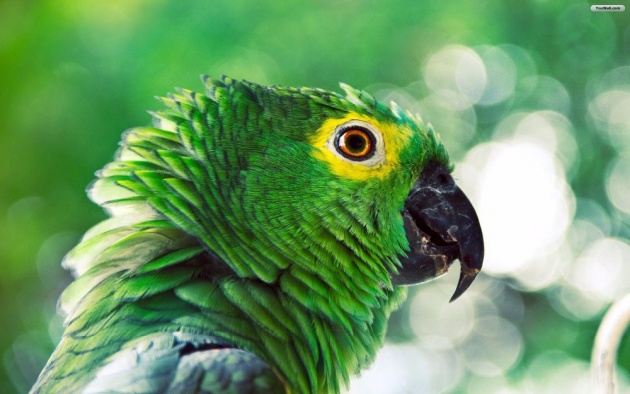 For other uses, see Parrot (disambiguation).
For other uses, see Parrot (disambiguation).
Parrots
Temporal range: Eocene – Holocene,[1] 54–0 MaPreЄ
Є
O
S
D
C
P
T
J
K
Pg
N
Blue-and-yellow macaw (Ara ararauna) in flight.
Rose-ringed parakeet (Psittacula krameri)
Scientific classification
Kingdom:
Animalia
Phylum:
Chordata
Clade:
Dinosauria
Class:
Aves
Clade:
Psittacopasserae
Order:
Psittaciformes
Wagler, 1830
Superfamilies
Cacatuoidea (cockatoos)
Psittacoidea (true parrots)
Strigopoidea (New Zealand parrots)
Range of parrots, all species (red)
Parrots, also known as psittacines /ˈsɪtəsaɪnz/,[2][3] are birds of the roughly 393species in 92 genera that make up the order Psittaciformes,[4] found in mosttropical and subtropical regions. The order is subdivided into three superfamilies: the Psittacoidea ("true" parrots), the Cacatuoidea (cockatoos), and the Strigopoidea(New Zealand parrots).[5] Parrots have a generally pantropical distribution with several species inhabiting temperate regions in the Southern Hemisphere, as well. The greatest diversity of parrots is in South America and Australasia.
Characteristic features of parrots include a strong, curved bill, an upright stance, strong legs, and clawed zygodactyl feet. Many parrots are vividly coloured, and some are multi-coloured. Most parrots exhibit little or no sexual dimorphism. They form the most variably sized bird order in terms of length.
The most important components of most parrots' diets are seeds, nuts, fruit, buds, and other plant material. A few species sometimes eat animals and carrion, while the lories and lorikeets are specialised for feeding on floral nectar and soft fruits. Almost all parrots nest in tree hollows (or nest boxes in captivity), and lay white eggsfrom which hatch altricial (helpless) young.
Parrots, along with ravens, crows, jays, and magpies, are among the most intelligent birds, and the ability of some species to imitate human voices enhances their popularity as pets. Some parrots are intelligent and talk at the level of a four-to-five year old human. Trapping wild parrots for the pet trade, as well as hunting, habitat loss, and competition from invasive species, has diminished wild populations, with parrots being subjected to more exploitation than any other group of birds.[6]Measures taken to conserve the habitats of some high-profile charismatic specieshave also protected many of the less charismatic species living in the sameecosystems.[7]
Contents
[hide]
1Taxonomy1.1Origins and evolution
1.2Phylogeny
1.3Systematics
1.4Other lists
2Morphology
3Distribution and habitat
4Behaviour4.1Diet
4.2Breeding
4.3Intelligence and learning4.3.1Sound imitation and speech
4.3.2Cooperation
5Relationship with humans5.1Pets
5.2Zoos
5.3Trade
5.4Culture
5.5Feral populations
5.6Threats and conservation
6See also
7References
8External links
Taxonomy[edit]
Origins and evolution[edit]
Fossil dentary specimen UCMP 143274 restored as a Cretaceous parrot (left) or a dinosaur
Psittaciform diversity in South America and Australasia suggests that the order may have evolved in Gondwanaland, centred in Australasia.[8] The scarcity of parrots in the fossil record, however, presents difficulties in confirming the hypothesis.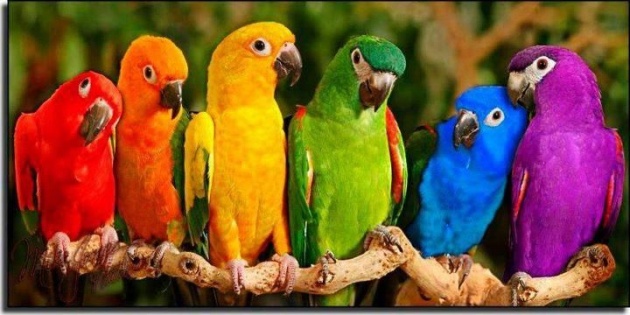
A single 15 mm (0.6 in) fragment from a large lower bill (UCMP 143274), found in deposits from the Lance Creek Formation in Niobrara County, Wyoming, had been thought to be the oldest parrot fossil and is presumed to have originated from theLate Cretaceous period, which makes it about 70 million years ago (Mya).[9] Other studies suggest that this fossil is not from a bird, but from a caenagnathid theropodor a non-avian dinosaur with a birdlike beak.[10][11]
It is now generally assumed that the Psittaciformes, or their common ancestors with several related bird orders, were present somewhere in the world around the Cretaceous–Paleogene extinction event (K-Pg extinction), some 66 Mya. If so, they probably had not evolved their morphological autapomorphies yet, but were generalised arboreal birds, roughly similar (though not necessarily closely related) to today's potoos or frogmouths (see also Palaeopsittacus below). Though these birds (Cypselomorphae) are a phylogenetically challenging group, they seem at least closer to the parrot ancestors than, for example, the modern aquatic birds (Aequornithes). The combined evidence supported the hypothesis of Psittaciformes being "near passerines", i.e. the mostly land-living birds that emerged in close proximity to the K-Pg extinction. Indeed, analysis of transposable element insertions observed in the genomes of passerines and parrots, but not in the genomes of other birds, provides strong evidence that parrots are the sister group of passerines, forming a clade Psittacopasserae, to the exclusion of the next closest group, the falcons.[12]
Europe is the origin of the first undeniable parrot fossils, which date from about 50 Mya. The climate there and then was tropical, consistent with the Paleocene-Eocene thermal maximum. Initially, a neoavian named Mopsitta tanta, uncovered in Denmark's Early Eocene Fur Formation and dated to 54 Mya, was assigned to the Psittaciformes; it was described from a single humerus.[13] However, the rather nondescript bone is not unequivocally psittaciform, and more recently it was pointed out that it may rather belong to a newly discovered ibis of the genus Rhynchaeites, whose fossil legs were found in the same deposits.
The feathers of a yellow-headed amazon: The blue component of the green colouration is due to light scattering, while the yellow is due to pigment.
Fossils assignable to Psittaciformes (though not yet the present-day parrots) date from slightly later in the Eocene, starting around 50 Mya. Several fairly complete skeletons of parrot-like birds have been found in England and Germany.[14] Some uncertainty remains, but on the whole it seems more likely that these are not direct ancestors of the modern parrots, but related lineages that evolved in the Northern Hemisphere and have since died out. These are probably not "missing links" between ancestral and modern parrots, but rather psittaciform lineages that evolved parallel to true parrots and cockatoos and had their own peculiar autapomorphies:
Psittacopes (Early/Middle Eocene of Geiseltal, Germany)—basal[citation needed]
Serudaptus—pseudasturid or psittacid[citation needed]
Pseudasturidae (Halcyornithidae may be correct name)Pseudasturides – formerly Pseudastur
VastanavidaeVastanavis (Early Eocene of Vastan, India)
QuercypsittidaeQuercypsitta (Late Eocene)
The earliest records of modern parrots date to about 23–20 Mya and are also from Europe. Subsequently, the fossil record—again mainly from Europe—consists of bones clearly recognisable as belonging to parrots of modern type. The Southern Hemisphere does not have nearly as rich a fossil record for the period of interest as the Northern, and contains no known parrot-like remains earlier than the early to middle Miocene, around 20 Mya. At this point, however, is found the first unambiguous parrot fossil (as opposed to a parrot-like one), an upper jaw that is indistinguishable from that of moderncockatoos. A few modern genera are tentatively dated to a Miocene origin, but their unequivocal record stretches back only some 5 million years (see genus articles for more).
Fossil skull of a presumed parrot relative from the Eocene Green River Formation in Wyoming
The named fossil genera of parrots are probably all in the Psittacidae or close to its ancestry:
Archaeopsittacus (Late Oligocene/Early Miocene)
Xenopsitta (Early Miocene of Czechia)
Psittacidae gen. et spp. indet. (Bathans Early/Middle Miocene of Otago, New Zealand)—several species
Bavaripsitta (Middle Miocene of Steinberg, Germany)
Psittacidae gen. et sp. indet. (Middle Miocene of France)—erroneously placed inPararallus dispar, includes "Psittacus" lartetianus
Some Paleogene fossils are not unequivocally accepted as of psittaciforms:
Palaeopsittacus (Early – Middle Eocene of NW Europe)—caprimulgiform (podargid)[citation needed] or quercypsittid[citation needed]
"Precursor" (Early Eocene)—part of this apparent chimera seems to be of a pseudasturid or psittacid
Pulchrapollia (Early Eocene)—includes "Primobucco" olsoni—psittaciform (pseudasturid or psittacid)[citation needed]
Molecular studies suggest that parrots evolved approximately 59 Mya (range 66–51 Mya) in Gondwanaland.[15] The three major clades of Neotropical parrots originated about 50 Ma (range 57–41 Ma).
Phylogeny[edit]
Parrots
Psittacoidea
Cacatuoidea
Strigopoidea
Other birds
Phylogenetic relationship between the three parrot superfamilies based on the available literature[8][16][17]
The Psittaciformes comprise three main lineages: Strigopoidea, Psittacoidea andCacatuoidea.
The Strigopoidea were considered part of the Psittacoidea, but recent studies place this group of New Zealand species at the base of the parrot tree next to the remaining members of the Psittacoidea, as well as all members of the Cacatuoidea.[8][16][17]
The Cacatuoidea are quite distinct, having a movable head crest, a different arrangement of the carotid arteries, a gall bladder, differences in the skull bones, and lack the Dyck texture feathers that—in the Psittacidae—scatter light to produce the vibrant colours of so many parrots. Colourful feathers with high levels of psittacofulvin resist the feather-degrading bacterium Bacillus licheniformisbetter than white ones.[18]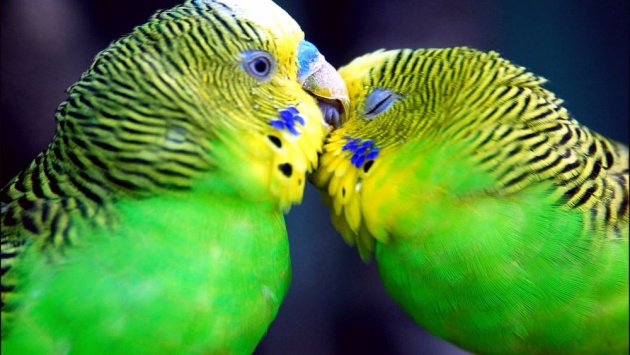
Lorikeets were previously regarded as a third family, Loriidae,[19] but are now considered a tribe (Loriini) within the subfamily Lorinae. The two other tribes in the subfamily are the closely related fig parrots (two genera in the tribe Cyclopsittini) and budgerigar (tribe Melopsittacini).[8][16][17]
Systematics[edit]
The following classification is based on the most recent proposal, which in turn is based on all the relevant recent findings.[5][8][16][20][21][22][23]
Skeleton of a parrot
Superfamily Strigopoidea: New Zealand parrots
Family Nestoridae: two genera with two living (kea and New Zealand kaka) and several extinct species of the New Zealand region
Family Strigopidae: the flightless, critically endangered kakapo of New Zealand
Superfamily Cacatuoidea: cockatoos
Family CacatuidaeSubfamily Nymphicinae: one genus with one species, the cockatiel.
Subfamily Calyptorhynchinae: the black cockatoos
Subfamily CacatuinaeTribe Microglossini: one genus with one species, the black palm cockatoo
Tribe Cacatuini: four genera of white, pink, and grey species
Superfamily Psittacoidea: true parrots
Family PsittacidaeSubfamily Psittacinae: two African genera, Psittacus and Poicephalus
Subfamily ArinaeTribe Arini: 15 genera
Tribe Androglossini: seven genera
Incertae sedis: 10 genera
Family PsittrichasiidaeSubfamily Psittrichasinae: one species, Pesquet's parrot
Subfamily Coracopsinae: one genus with several species.
Family PsittaculidaeSubfamily PlatycercinaeTribe Pezoporini: ground parrots and allies
Tribe Platycercini: broad-tailed parrots
Subfamily Psittacellinae: one genus (Psittacella) with several species
Subfamily LoriinaeTribe Loriini: lories and lorikeets
Tribe Melopsittacini: one genus with one species, the budgerigar
Tribe Cyclopsittini: fig parrots
Subfamily Agapornithinae: three genera
Subfamily PsittaculinaeTribe Polytelini: three genera
Tribe Psittaculini: Asian psittacines
Tribe Micropsittini: pygmy parrots
Other lists[edit]
A list of all parrots sortable by common or binomial name, about 350 speciesTaxonomic list of Cacatuidae species, 21 species in seven genera
Taxonomic list of true parrots, which provides the sequence of Psittacidae genera and species following a traditional two-subfamily approach, as in the taxobox above, about 330 species
List of Strigopidae
List of macaws
List of amazon parrots
List of Aratinga parakeets
Morphology[edit]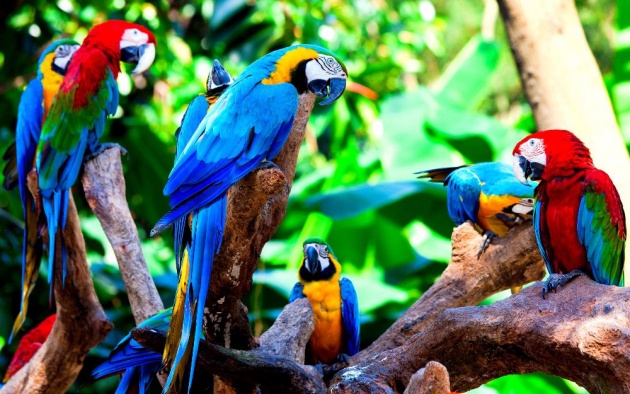
Glossy black cockatooshowing the parrot's strong bill, clawed feet, and sideways-positioned eyes
Extant species range in size from the buff-faced pygmy parrot, at under 10 g (0.4 oz) in weight and 8 cm (3.1 in) in length, to the hyacinth macaw, at 1 m (3.3 ft) in length, and thekakapo, at 4.0 kg (8.8 lb) in weight. Among the superfamilies, the three extant Strigopoidea species are all large parrots, and the cockatoos tend to be large birds, as well. The Psittacoidea parrots are far more variable, ranging the full spectrum of sizes shown by the family.
The most obvious physical characteristic is the strong, curved, broad bill. The upper mandible is prominent, curves downward, and comes to a point. It is not fused to the skull, which allows it to move independently, and contributes to the tremendous biting pressure the birds are able to exert. The lower mandible is shorter, with a sharp, upward-facing cutting edge, which moves against the flat portion of the upper mandible in an anvil-like fashion. Touch receptors occur along the inner edges of the kerantinised bill, which are collectively known as the "bill tip organ", allowing for highly dexterous manipulations. Seed-eating parrots have a strong tongue (containing similar touch receptors to those in the bill tip organ), which helps to manipulate seeds or position nuts in the bill so that the mandibles can apply an appropriate cracking force. The head is large, with eyes positioned high and laterally in the skull, so the visual field of parrots is unlike any other birds. Without turning its head, a parrot can see from just below its bill tip, all above its head, and to quite far behind its head. Parrots also have quite a wide frontal binocular field for a bird, although this is nowhere near as large as primate binocular visual fields.[24]
Parrots have strong zygodactyl feet with sharp, elongated claws, which are used for climbing and swinging. Most species are capable of using their feet to manipulate food and other objects with a high degree of dexterity, in a similar manner to a human using his hands. A study conducted with Australian parrots has demonstrated that they exhibit "handedness", a distinct preference with regards to the foot used to pick up food, with adult parrots being almost exclusively "left-footed" or "right-footed", and with the prevalence of each preference within the population varying by species.[25]
Cockatoo species have a mobile crest of feathers on the top of their heads, which they can raise for display, and retract. No other parrots can do so, but the Pacific lorikeets in the genera Vini and Phigys can ruffle the feathers of the crown and nape, and the red-fan parrot (or hawk-headed parrot) has a prominent feather neck frill that it can raise and lower at will. The predominant colour of plumage in parrots is green, though most species have some red or another colour in small quantities. Cockatoos are the main exception to this, having lost the green and blue plumage colours in their evolutionary history; they are now predominately black or white with some red, pink, or yellow. Strong sexual dimorphism in plumage is not typical among parrots, with some notable exceptions, the most striking being the eclectus parrot.
Distribution and habitat[edit]
Most parrot species are tropical, but a few species, like this austral parakeet, range deeply into temperate zones.
See also: List of Psittaciformes by population
Parrots are found on all tropical and subtropical continents and regions includingAustralia and Oceania, South Asia, Southeast Asia, Central America, South America, and Africa. Some Caribbean and Pacific islands are home to endemic species. By far the greatest number of parrot species come from Australasia and South America. The lories and lorikeets range from Sulawesi and the Philippines in the north to Australia and across the Pacific as far as French Polynesia, with the greatest diversity being found in and around New Guinea. The subfamily Arinaeencompasses all the neotropical parrots, including the amazons, macaws, and conures, and ranges from northern Mexico and the Bahamas to Tierra del Fuego in the southern tip of South America. The pygmy parrots, tribe Micropsittini, form a small genus restricted to New Guinea. The superfamily Strigopoidea contains three living species of aberrant parrots from New Zealand. The broad-tailed parrots, subfamily Platycercinae, are restricted to Australia, New Zealand, and the Pacific islands as far eastwards as Fiji. The true parrot superfamily, Psittacoidea, includes a range of species from Australia and New Guinea to South Asia and Africa. The centre of cockatoo biodiversity is Australia and New Guinea, although some species reach the Solomon Islands (and one formerly occurred in New Caledonia),[26]Wallacea and the Philippines.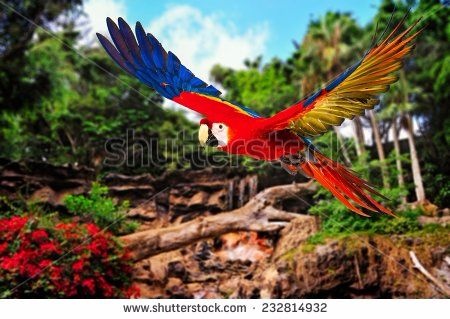
Several parrots inhabit the cool, temperate regions of South America and New Zealand. One, the Carolina parakeet, lived in temperate North America, but was hunted to extinction in the early 20th century. Many parrots have been introduced to areas with temperate climates, and have established stable populations in parts of the United States (including New York City),[27] the United Kingdom,[28] Belgium[29] and Spain,[30][31] as well as in Greece.[32][33]
Few parrots are wholly sedentary or fully migratory. Most fall somewhere between the two extremes, making poorly understood regional movements, with some adopting an entirely nomadic lifestyle.[34]
Behaviour[edit]
Numerous challenges are found in studying wild parrots, as they are difficult to catch and once caught, they are difficult to mark. Most wild bird studies rely on banding or wing tagging, but parrots chew off such attachments.[34] Parrots also tend to range widely, and consequently many gaps occur in knowledge of their behaviour. Some parrots have a strong, direct flight. Most species spend much of their time perched or climbing in tree canopies. They often use their bills for climbing by gripping or hooking on branches and other supports. On the ground, parrots often walk with a rolling gait.
Diet[edit]
A yellow-tailed black cockatoo using its strong bill to search for grubs
A white-eyed parakeet couple eatingqueen palm seeds; parrots have curved and strong beaks that can break very hard seeds.
The diet of parrots consists of seeds, fruit, nectar, pollen, buds, and sometimes arthropods and other animal prey. The most important of these for most true parrots and cockatoos are seeds; the evolution of the large and powerful bill can be explained primarily as an adaptation to opening and consuming seeds. All true parrots except the Pesquet's parrot employ the same method to obtain the seed from the husk; the seed is held between the mandibles and the lower mandible crushes the husk, whereupon the seed is rotated in the bill and the remaining husk is removed.[34] A foot is sometimes used to help holding large seeds in place. Parrots are seed predators rather than seeddispersers, and in many cases where species are recorded as consuming fruit, they are only eating the fruit to get at the seed. As seeds often have poisons that protect them, parrots carefully remove seed coats and other chemically defended fruit parts prior to ingestion. Many species in the Americas, Africa, and Papua New Guinea consume clay, which both releases minerals and absorbs toxic compounds from the gut.[35]
Parrots at a clay lick in Ecuador
The lories and lorikeets, hanging parrots, and swift parrot are primarily nectar and pollen consumers, and have tongues with brush tips to collect this source of food, as well as some specialised gut adaptations to accommodate this diet.[36] Many other species also consume nectar when it becomes available.
In addition to feeding on seeds and flowers, some parrot species prey on animals, especially invertebrate larvae. Golden-winged parakeets prey on water snails, and the kea of New Zealand kills juvenile petrels and adult sheep.[37] Another New Zealand parrot, the Antipodes parakeet, enters the burrows of nesting grey-backed storm petrels and kills the incubating adults.[38]Some cockatoos and the kākā excavate branches and wood to obtain grubs; the bulk of the yellow-tailed black cockatoo's diet is made up of insects[39]
Breeding[edit]
With few exceptions, parrots are monogamous breeders who nest in cavities and hold no territories other than their nesting sites.[34][40] The pair bonds of the parrots and cockatoos are strong and a pair remains close even during the nonbreeding season, even if they join larger flocks. As with many birds, pair bond formation is preceded by courtship displays; these are relatively simple in the case of cockatoos. In Psittacidae parrots' common breeding displays, usually undertaken by the male, include slow, deliberate steps known as a "parade" or "stately walk" and the "eye-blaze", where the pupil of the eye constricts to reveal the edge of the iris.[34] Allopreening is used by the pair to help maintain the bond. Cooperative breeding, where birds other than the breeding pair help the pair raise the young and is common in some bird families, is extremely rare in parrots, and has only unambiguously been demonstrated in the El Oro parakeet and the golden parakeet (which may also exhibit polygamous, or group breeding, behaviour with multiple females contributing to the clutch).[41]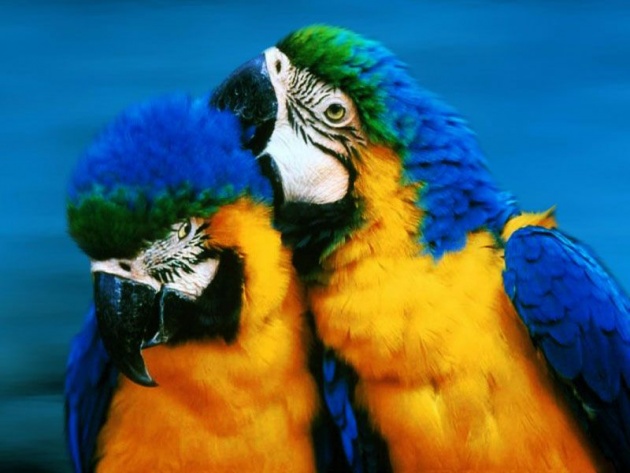
The vast majority of parrots are, like this feral rose-ringed parakeet, cavity nesters.
Only the monk parakeet and five species of Agapornis lovebirds build nests in trees,[42] and three Australian and New Zealand ground parrots nest on the ground. All other parrots and cockatoos nest in cavities, either tree hollows or cavities dug into cliffs, banks, or the ground. The use of holes in cliffs is more common in the Americas. Many species use termite nests, possibly to reduce the conspicuousness of the nesting site or to create a favourable microclimate.[43] In most cases, both parents participate in the nest excavation. The length of the burrow varies with species, but is usually between 0.5 and 2 m (1.6 and 6.6 ft) in length. The nests of cockatoos are often lined with sticks, wood chips, and other plant material. In the larger species of parrots and cockatoos, the availability of nesting hollows may be limited, leading to intense competition for them both within the species and between species, as well as with other bird families. The intensity of this competition can limit breeding success in some cases.[44][45] Some species are colonial, with the burrowing parrot nesting in colonies up to 70,000 strong.[46] Coloniality is not as common in parrots as might be expected, possibly because most species adopt old cavities rather than excavate their own.[47]
The eggs of parrots are white. In most species, the female undertakes all the incubation, although incubation is shared in cockatoos, the blue lorikeet, and the vernal hanging parrot. The female remains in the nest for almost all of the incubation period and is fed both by the male and during short breaks. Incubation varies from 17 to 35 days, with larger species having longer incubation periods. The newly born young are altricial, either lacking feathers or with sparse white down. The young spend three weeks to four months in the nest, depending on species, and may receive parental care for several months thereafter.[48]
As typical of K-selected species, the macaws and other larger parrot species have low reproductive rates. They require several years to reach maturity, produce one or very few young per year, and do not necessarily breed every year.
Intelligence and learning[edit]
Sun conure demonstrating parrots' puzzle-solving skills
Studies with captive birds have given insight into which birds are the most intelligent. While parrots are able to mimic human speech, studies with the African grey parrothave shown that some are able to associate words with their meanings and form simple sentences (see Alex and N'kisi). Along with crows, ravens, and jays (familyCorvidae), parrots are considered the most intelligent of birds. The brain-to body size ratio of psittacines and corvines is actually comparable to that of higher primates.[49] One argument against the supposed intelligent capabilities of bird species is that birds have a relatively small cerebral cortex, which is the part of the brain considered the main area of intelligence in other animals. However, birds use a different part of the brain, the mediorostral HVC as the seat of their intelligence. These species tend to have the largest hyperstriata, and Harvey J. Karten, a neuroscientist at the University of California, San Diego, who studied bird physiology, has discovered that the lower part of the avian brain is functionally similar to that in humans. Not only have parrots demonstrated intelligence through scientific testing of their language-using ability, but also some species of parrots such as the kea are also highly skilled at using tools and solving puzzles.[50]
Learning in early life is apparently important to all parrots, and much of that learning is social learning. Social interactions are often practised with siblings, and in several species, creches are formed with several broods, and these, too, are important for learning social skills. Foraging behaviour is generally learnt from parents, and can be a very protracted affair. Suprageneralists and specialists generally become independent of their parents much quicker than partly specialised species who may have to learn skills over long periods as various resources become seasonally available. Play forms a large part of learning in parrots; it can be solitary, and related to motor skills, or social. Species may engage in play fights or wild flights to practice predator evasion. An absence of stimuli can delay the development of young birds, as demonstrated by a group of vasa parrots kept in tiny cages with domesticated chickens from the age of 3 months; at 9 months, these birds still behaved in the same way as 3-month-olds, but had adopted some chicken behaviour.[34] In a similar fashion, captive birds in zoo collections or pets can, if deprived of stimuli, develop stereotyped behaviours and harmful behaviours like self plucking. Aviculturists working with parrots have identified the need for environmental enrichment to keep parrots stimulated.
Sound imitation and speech[edit]
Main article: Talking bird
See also: Animal language
Video of an orange-winged amazon saying "hello" having been prompted by some people
Many parrots can imitate human speech or other sounds. A study by Irene Pepperberg suggested a high learning ability in an African grey parrot named Alex. Alex was trained to use words to identify objects, describe them, count them, and even answer complex questions such as "How many red squares?" with over 80% accuracy. N'kisi, another African grey, has been shown to have a vocabulary around a thousand words, and has displayed an ability to invent, as well as use words in context and in the correct tense.
Parrots do not have vocal cords, so sound is accomplished by expelling air across the mouth of the bifurcated trachea, in the organ called the syrinx. Different sounds are produced by changing the depth and shape of the trachea. African grey parrots of all subspecies are known for their superior ability to imitate sounds and human speech. This ability has made them prized as pets from ancient times to the present. In the Masnavi, written by Rumi of Persia in 1250, the author describes an ancient method for training parrots to speak.
Although most parrot species are able to imitate, some of the amazon parrots are generally regarded as the next-best imitators and speakers of the parrot world. The question of why birds imitate remains open, but those that do often score very high on tests designed to measure problem-solving ability. Wild African grey parrots have been observed imitating other birds.[51] Most other wild parrots have not been observed imitating other species.
Cooperation[edit]
The journal Animal Cognition stated that some birds preferred to work alone, while others like to work together as with African grey parrots. With two parrots, they know the order of tasks or when they should do something together at once, but they have trouble exchanging roles. With three parrots, one parrot usually prefers to cooperate with one of the other two, but all of them are cooperating to solve the task.[52]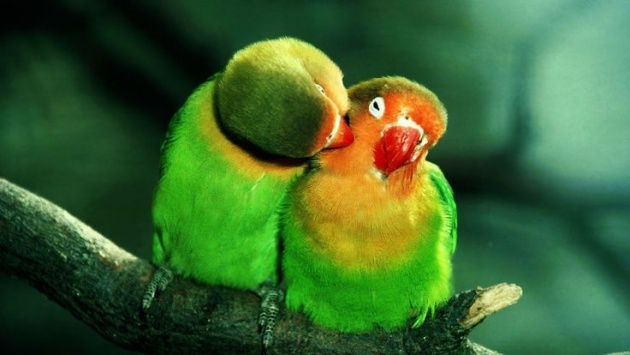
Relationship with humans[edit]
Video of a blue-fronted amazon mimicking a human laughing
Humans and parrots have a complicated relationship. Economically, they can be beneficial to communities as sources of income from the pet trade and are highly marketable tourism draws and symbols, but some species are also economically important pests, particularly some cockatoo species in Australia. Some parrots have also benefited from human changes to the environment in some instances, and have expanded their ranges alongside agricultural activity, but many species have declined, as well.
A number of careers and professions are devoted to parrots. Zoos and aquaria employ keepers to care for and shape the behaviour of parrots. Some veterinarians who specialise in avian medicine treat parrots exclusively. Biologists study parrot populations in the wild and help to conserve wild populations. Aviculturalists breed and sell parrots for the pet trade.
Tens of millions of parrots have been removed from the wild, and parrots have been traded in greater numbers and for far longer than any other group of wild animals.[53] Many parrot species are still threatened by this trade, as well as habitat loss, predation by introduced species, and hunting for food or feathers. Some parrot species are agricultural pests,[54]eating fruits, grains, and other crops, but parrots can also benefit economies throughbirdwatching-based ecotourism.[55]
Pets[edit]
Pet Cuban amazons inCuba
Further information: Companion parrot
Parrots may not make good pets for most people because of their natural wild instincts such as screaming and chewing. Although parrots can be very affectionate and cute when immature, they often become aggressive when mature (partly due to mishandling and poor training) and may bite, causing serious injury. For this reason, parrot rescue groups estimate that most parrots are surrendered and rehomed through at least five homes before reaching their permanent destinations or before dying prematurely from unintentional or intentional neglect and abuse. The parrots' ability to mimic human words and their bright colors and beauty prompt impulse buying from unsuspecting consumers. The domesticated budgerigar, a small parrot, is the most popular of all pet bird species and the most discarded. In 1992, the newspaper USA Today published that 11 million pet birds were in the United States alone,[56] many of them parrots. Europeans kept birds matching the description of the rose-ringed parakeet (or called the ring-necked parrot), documented particularly in a first-century account by Pliny the Elder.[57] As they have been prized for thousands of years for their beauty and ability to talk, they have also often been misunderstood. For example, author Wolfgang de Grahl says in his 1987 book The Grey Parrot that some importers had parrots drink only coffee while they were shipped by boat, believing that pure water was detrimental and that their actions would increase survival rates during shipping. (Nowadays, it is commonly accepted that the caffeine in coffee is toxic to birds.)
Pet parrots may be kept in a cage or aviary; though generally, tame parrots should be allowed out regularly on a stand or gym. Depending on locality, parrots may be either wild-caught or be captive-bred, though in most areas without native parrots, pet parrots are captive-bred. Parrot species that are commonly kept as pets include conures, macaws, amazon parrots, cockatoos, African greys, lovebirds, cockatiels, budgerigars, caiques, parakeets, and Eclectus, Pionus, andPoicephalus species. Temperaments and personalities vary even within a species, just as with dog breeds. African grey parrots are thought to be excellent talkers, but not all African grey parrots want to talk, though they have the capability to do so. Noise level, talking ability, cuddliness with people, and care needs can sometimes depend on how the bird is cared for and the attention he/she regularly receives.
Parrots invariably require an enormous amount of attention, care, and intellectual stimulation to thrive, akin to that required by a three-year-old child, which many people find themselves unable to provide in the long term.[58] Parrots that are bred for pets may be hand fed or otherwise accustomed to interacting with people from a young age to help ensure they become tame and trusting. However, even when hand fed, parrots revert to biting and aggression during hormonal surges and if mishandled or neglected. Parrots are not low-maintenance pets; they require feeding, grooming, veterinary care, training,environmental enrichment through the provision of toys, exercise, and social interaction (with other parrots or humans) for good health.
Some large parrot species, including large cockatoos, amazons, and macaws, have very long lifespans, with 80 years being reported and record ages of over 100.[citation needed] Small parrots, such as lovebirds, hanging parrots, and budgies, have shorter lifespans up to 15–20 years. Some parrot species can be quite loud, and many of the larger parrots can be destructive and require a very large cage, and a regular supply of new toys, branches, or other items to chew up. The intelligence of parrots means they are quick to learn tricks and other behaviours—both good and bad—that get them what they want, such as attention or treats.
The popularity, longevity, and intelligence of many of the larger kinds of pet parrots and their wild traits such as screaming, has led to many birds needing to be rehomed during the course of their long lifespans. A common problem is that large parrots that are cuddly and gentle as juveniles mature into intelligent, complex, often demanding adults who can outlive their owners, and can also become aggressive or even dangerous. Due to these problems, homeless parrots are being euthanised like dogs and cats, and parrot adoption centres and sanctuaries are becoming more common. Parrots do not often do well in captivity, causing some parrots to go insane and develop repetitive behaviors, such as swaying and screaming, or they become riddled with intense fear. Feather destruction and self-mutilation, although not commonly seen in the wild, occur frequently in captivity.
Zoos[edit]
Scarlet macaw riding a tricycle at a show in Spain
Parrot species are found in most zoos, and a few zoos participate in breeding and conservation programs. Some zoos have organized displays of trained parrots and other birds doing tricks.
Trade[edit]
Main article: International parrot trade
Ten thousand hyacinth macawswere taken from the wild for the pet trade in the 1980s.[59] As a result, Brazil now has only a very small number of breeding pairs left in the wild.[citation needed]
The popularity of parrots as pets has led to a thriving—and often illegal—trade in the birds, and some species are now threatened with extinction. A combination of trapping of wild birds and damage to parrot habitats makes survival difficult or even impossible for some species of parrot. Importation of wild-caught parrots into the US and Europe is illegal.
The trade continues unabated in some countries. A report published in January 2007 presents a clear picture of the wild-caught parrot trade in Mexico, stating: "The majority of parrots captured in Mexico stay in the country for the domestic trade. A small percentage of this capture, 4% to 14%, is smuggled into the USA."[60]
The scale of the problem can be seen in the Tony Silva case of 1996, in which a parrot expert and former director at Tenerife's Loro Parque (Europe's largest parrot park) was jailed in the United States for 82 months and fined $100,000 for smuggling hyacinth macaws.[61] (Such birds command a very high price.) The case led to calls for greater protection and control over trade in the birds. Different nations have different methods of handling internal and international trade. Australia has banned the export of its native birds since 1960. Following years of campaigning by hundreds of NGOs and outbreaks of avian flu, in July 2007, the European Union halted the importation of all wild birds with a permanent ban on their import. Prior to an earlier temporary ban started in late October 2005, the EU was importing about two million live birds a year, about 90% of the international market: hundreds of thousands of these were parrots. No national laws protect feral parrot populations in the U.S. Mexico has a licensing system for capturing and selling native birds (though the laws are not well enforced).
Culture[edit]
Moche parrot, 200 AD Larco Museum Collection Lima, Peru
Parrots painting, 1670, Skokloster Castle
Three popinjays (parrots) on the arms of the Earl of Scarbrough
Parrots have featured in human writings, story, art, humor, religion, and music for thousands of years. From Aesop's fable "The parrot and the cat" and the Roman poet Ovid's "The Dead Parrot"(Latin), (English) to Monty Python's "Dead Parrot sketch" millennia later, parrots have existed in the consciousness of many cultures. Recent books about parrots in human culture include Parrot Culture.[62]
In ancient times and current, parrot feathers have been used in ceremonies and for decoration. The "idea" of the parrot has been used to represent the human condition in medieval literature such as the bestiary. They also have a long history as pets.
In Polynesian legend as current in the Marquesas Islands, the hero Laka/Aka is mentioned as having undertaken a long and dangerous voyage to Aotona in what are now the Cook Islands, to obtain the highly prized feathers of a red parrot as gifts for his son and daughter. On the voyage, 100 of his 140 rowers died of hunger on their way, but the survivors reached Aotona and captured enough parrots to fill 140 bags with their feathers.[63][64] By at least some versions, the feathers were plucked off living parrots without killing them.[65]
Macaws, like other parrots, mate for life
Parrots feature in many media. Magazines are devoted to parrots as pets, and to the conservation of parrots.[66] Fictional films include Home Alone 3 and Rio, and documentaries include The Wild Parrots of Telegraph Hill.
Parrots have also been considered sacred. The Moche people of ancient Peruworshipped birds and often depicted parrots in their art.[67]
Parrots are used as symbols of nations and nationalism. A parrot is found on theflag of Dominica. The St. Vincent parrot is the national bird of St. Vincent and the Grenadines, a Caribbean nation.
Parrots are popular in Buddhist scripture and many writings about them exist. For example, Amitābha once changed himself into a parrot to aid in converting people. Another old story tells how after a forest caught fire, the parrot was so concerned, it carried water to try to put out the flames. The ruler of heaven was so moved upon seeing the parrot's act, he sent rain to put out the fire. In Chinese Buddhisticonography, a parrot is sometimes depicted hovering on the upper right side Guan Yin clasping a pearl or prayer beads in its beak.
Sayings about parrots colour the modern English language. The verb "parrot" in the dictionary means "to repeat by rote". Also clichés such as the British expression "sick as a parrot" are given; although this refers to extreme disappointment rather than illness, it may originate from the disease of psittacosis, which can be passed to humans.[68][69] The first occurrence of a related expression is in Aphra Behn's 1681 play The False Count.[70]
Fans of Jimmy Buffett are known as parrotheads, named after the colorful birds. [71]
Feral populations[edit]
Main article: Feral parrot
Feral red-masked parakeets in San Francisco: The population is the subject of the book and film The Wild Parrots of Telegraph Hill.
Escaped parrots of several species have become established in the wild outside their natural ranges and in some cases outside the natural range of parrots. Among the earliest instances were pet red shining-parrots from Fiji, which established a population on the islands of southern Tonga. These introductions were prehistoric and red-shining parrots were recorded in Tonga by Captain Cook in the 1770s.[26]Escapees first began breeding in cities in California, Texas, and Florida in the 1950s (with unproven earlier claims dating back to the 1920s in Texas and Florida).[30]They have proved surprisingly hardy in adapting to conditions in Europe and North America. They sometimes even multiply to the point of becoming a nuisance or pest, and a threat to local ecosystems, and control measures have been used on some feral populations.[72]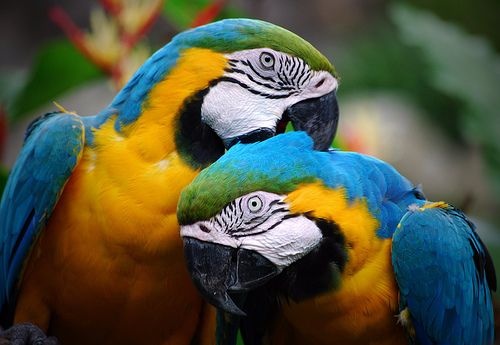
Threats and conservation[edit]
A mounted specimen of the Carolina parakeet, which was hunted to extinction
Deforestation pushed the Puerto Rican amazon to the brink of extinction, still remaining among the world's rarest birds despite conservation efforts.[73]
Many parrot species are in decline and several are extinct. Of the 350 or so living species, 130 are listed as near threatenedor worse by the IUCN, and 16 of which are currently considered critically endangered.[74]Several reasons are given for the decline of so many species, the principal threats being habitat loss and degradation, hunting, and for certain species, the wild-bird trade. Parrots are persecuted because, in some areas, they are (or have been) hunted for food and feathers, and as agricultural pests. For a time, Argentina offered a bounty on monk parakeets (anagricultural pest), resulting in hundreds of thousands of birds being killed, though apparently this did not greatly affect the overall population.[75]
Capture for the pet trade is a threat to many of the rarer or slower-to-breed parrots. Habitat loss or degradation, most often for agriculture, is a threat to many species. Parrots, being cavity nesters, are vulnerable to the loss of nesting sites and to competition with introduced species for those sites. The loss of old trees is a particular problem in some areas, particularly in Australia, where suitable nesting trees must be centuries old. Many parrots occur only on islands and are vulnerable to introduced species such as rats and cats, as they lack the appropriate antipredator behaviours needed to deal with mammalian predators. Controlling such predators can help in maintaining or increasing the numbers of endangered species.[76] Insular species, which have small populations in restricted habitats, are also vulnerable to unpredictable events such as hurricanes and volcanic eruptions.
Many active conservation groups have as their goal the conservation of wild parrot populations. One of the largest is the World Parrot Trust,[77] an international organisation. The group gives assistance to worthwhile projects, as well as producing a magazine[78] and raising funds through donations and memberships, often from pet parrot owners. They state they have helped conservation work in 22 countries. On a smaller scale, local parrot clubs raise money to donate to a conservation cause. Zoo and wildlife centres usually provide public education, to change habits that cause damage to wild populations. Recent conservation measures to conserve the habitats of some of the high-profile charismatic parrot species has also protected many of the less charismatic species living in the ecosystem.[7] A popular attraction that many zoos employ is a feeding station for lories and lorikeets, where visitors feed small parrots with cups of liquid food. This is usually done in association with educational signs and lectures.
Several projects aimed specifically at parrot conservation have met with success. Translocation of vulnerable kakapo, followed by intensive management and supplementary feeding, has increased the population from 50 individuals to 123.[79]In New Caledonia, the Ouvea parakeet was threatened by trapping for the pet trade and loss of habitat. Community-based conservation, which eliminated the threat of poaching, has allowed the population to increase from around 600 birds in 1993 to over 2000 birds in 2009.[80]
At present, the IUCN recognises 19 species of parrot as extinct since 1600 (the date used to denote modern extinctions).[81]This does not include species like the New Caledonian lorikeet, which has not been officially seen for 100 years, yet is still listed as critically endangered.
Trade, export, and import of all wild-caught parrots is regulated and only permitted under special licensed circumstances in countries party to the Convention on the International Trade in Endangered Species, that came into force in 1975 to regulate the international trade of all endangered wild-caught animal and plant species. In 1975, 24 parrot species were included on Appendix I of CITES, thus prohibiting commercial international trade in these birds. Since that initial listing, continuing threats from international trade led CITES to add an additional 32 parrot varieties to Appendix I.[82] All the other parrot species are protected on Appendix II of CITES. In addition, individual countries may have laws to regulate trade in certain species.



